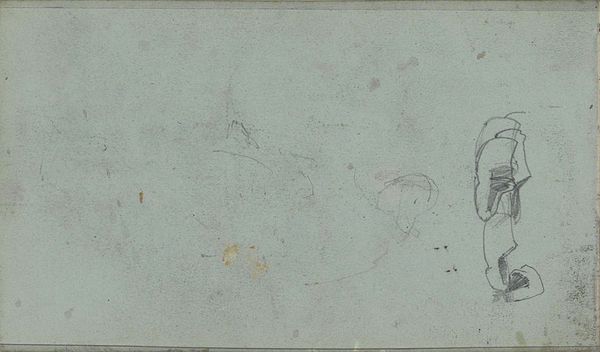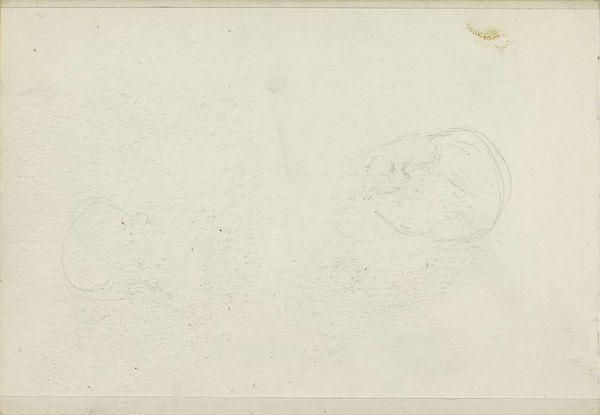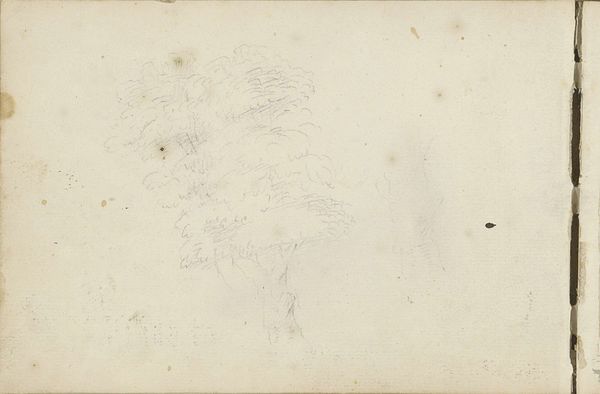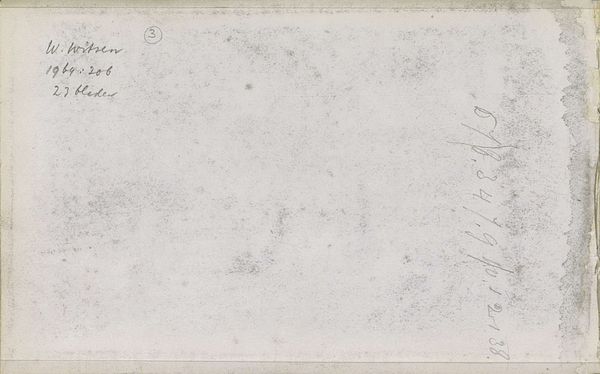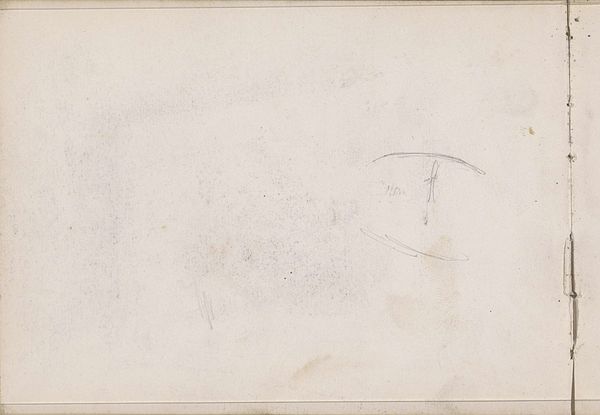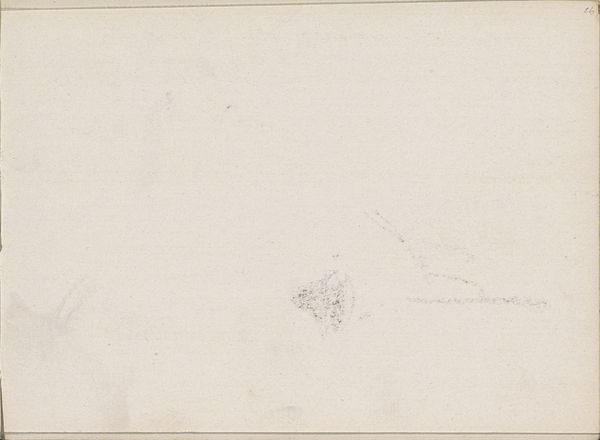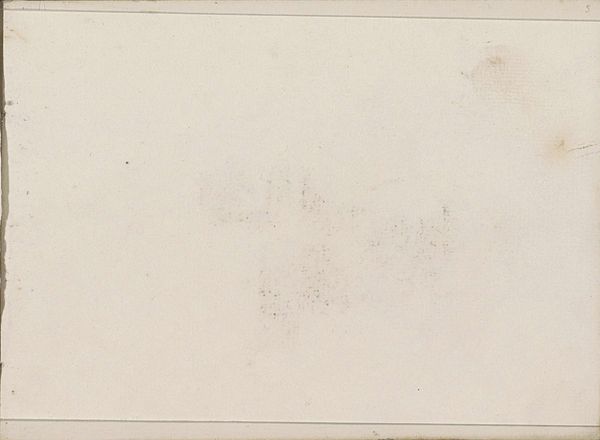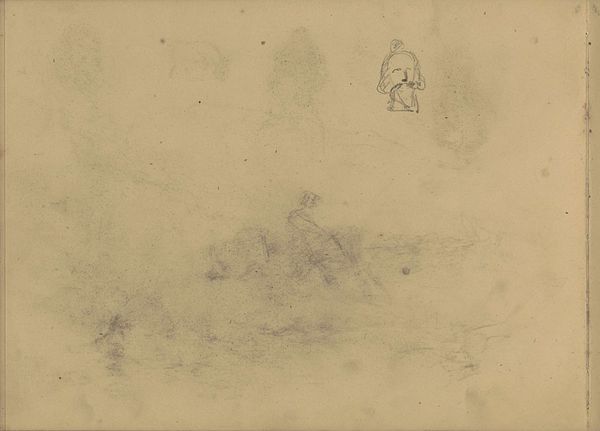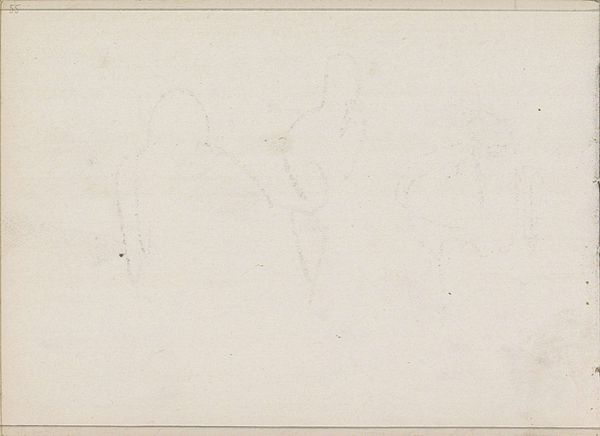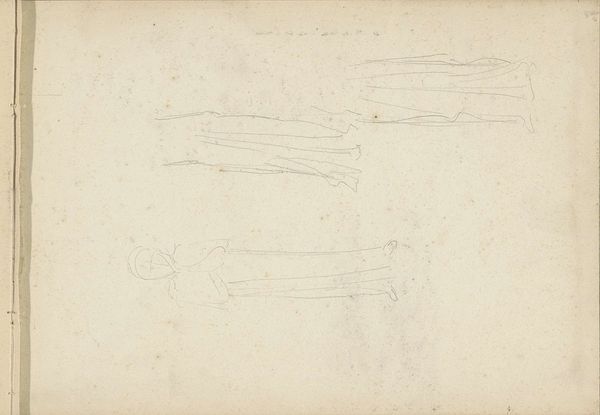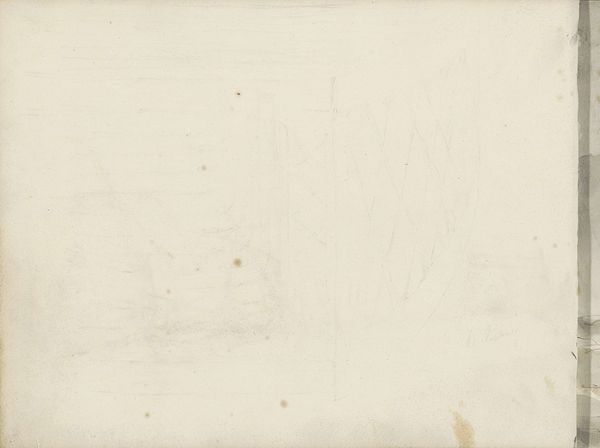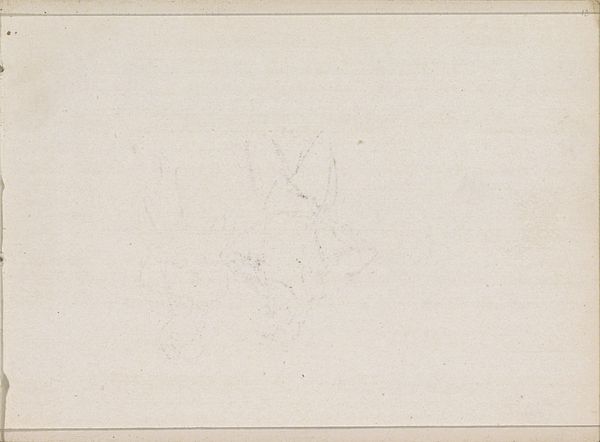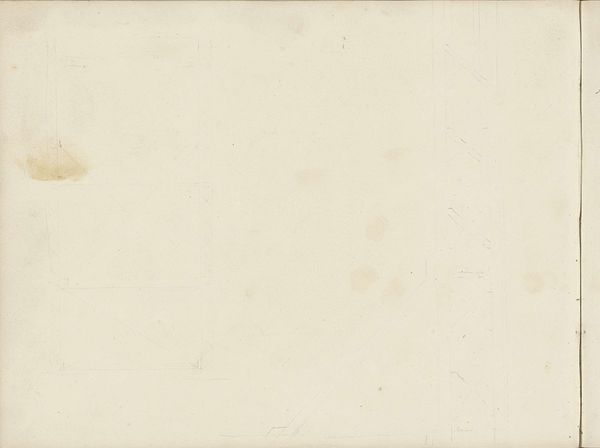
Copyright: Rijks Museum: Open Domain
Curator: This drawing, Studie, by Julie de Graag, made around 1894, presents itself as a simple pencil sketch on paper, yet it resonates with the subtle echoes of Impressionism. I am immediately drawn to how it challenges conventional ideas of artistic production. What do you make of it? Editor: Initially, the sketch strikes me as very understated, almost fragile. The lines are so faint, the image itself barely there. What I am interested in is how little it takes to form an artwork? How do you view this in relation to its means of production? Curator: Exactly! The near-invisibility forces us to consider the artist’s labour, or perhaps the perceived lack thereof. It challenges us to rethink value. Is it the skill, the time, the material, or something else that grants worth? Consider the paper itself - the support, seemingly humble - its source, its production. The lines suggest form, figure and presence. Do we typically regard drawing as ‘work’ in the same way we do, say, a bronze sculpture? Editor: That's a compelling point. The easy access to paper and pencils, even then, compared to the labor involved in bronze casting, immediately shifts the perception of "work." It appears mass production influenced our views. Curator: Precisely! The rise of readily available, inexpensive materials changes the dynamic between artist, object, and the potential consumer. Did the artist intend to finish it, or was the beauty in the process itself? Perhaps, through this supposed incompleteness, we gain insight into the conditions of artistic creation. It disrupts the high art/craft hierarchy that the academy favors so highly. Editor: This discussion makes me appreciate the work on paper a lot more, and now I am fascinated by how we measure value differently based on labour. Curator: Indeed. By engaging with these "minor" works and questioning the dominant narratives surrounding artistic labor, we start unpacking larger societal structures, like hierarchies between artistic practices or perceptions around finished versus unfinished artwork.
Comments
No comments
Be the first to comment and join the conversation on the ultimate creative platform.
